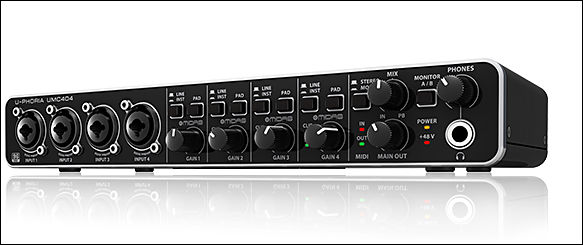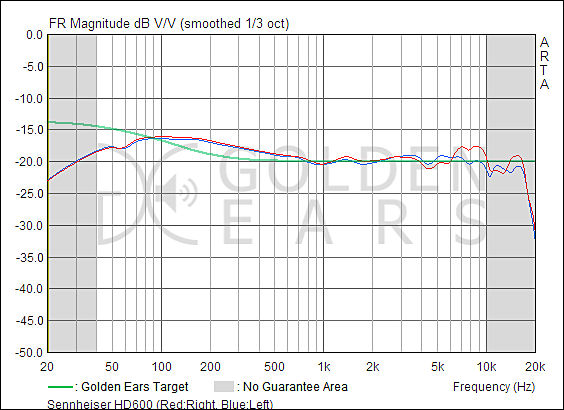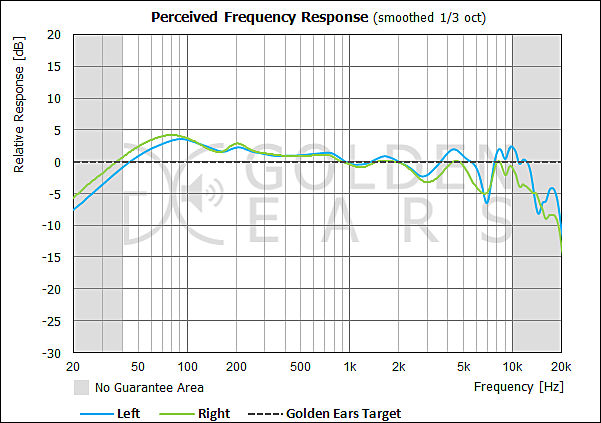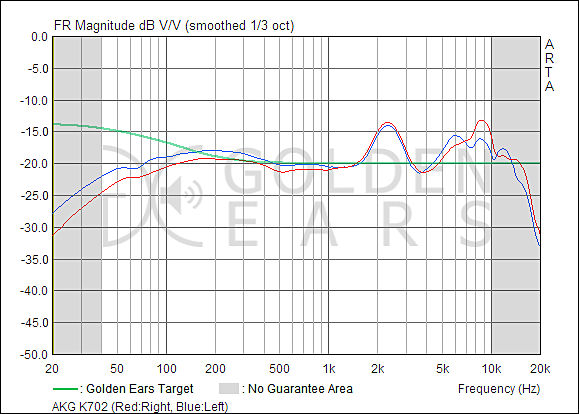
-
I', sure that Octacapture is top notch device in its class but the pricetag of $500 is a no no for me at the moment :)
First, at the link it is $399, not $500.
So those under $150 devices are absolutely everything I'm looking at.
I agree here. But. Choose them carefully. Today firms save every dollar, most cheap cards have savings were it is possible (mostly preamps, DACs and drivers). I suggest to get best card you can, most probably now discounted model.
For voiceover you can even use simple XLR to USB converted with phantom power. not bad ones exist.
-
Don't know if anyone here tried the Focusrite's VRM Box: http://us.focusrite.com/usb-audio-interfaces/vrm-box
It is a headphone USB interface that emulates a range of ambients / speakers for monitoring. When it was released, I saw some good reviews about it, but don't know how it evolved.
About headphones, I've bought a cheap Senal SMH-1000 after some good reviews. I've compared it at B&H against the Sony's VDR-V6 and it sounded much better - but of course it is not a top dog headphone.
-
You can simply try
- http://www.g-sonique.com/msx5headphonemonitoring.html
- http://europe.beyerdynamic.com/virtual-studio.html
- http://www.toneboosters.com/tb-isone/
Also Redline Monitor that had been mentioned already.
-
@Riker Can you elaborate a little on the type of audio you will be working with/on? Is it for narrative, documentary, commercial work?
-
Also good option is new Behringer U-PHORIA UMC404

- 4×4 USB2.0 Audio/MIDI Interface for recording microphones and instruments
- Audiophile 24-Bit/96 kHz resolution for professional audio quality
- Compatible with popular recording software including Avid Pro Tools, Ableton Live, Steinberg Cubase*, etc.
- Streams 4 inputs / 4 outputs plus 1x MIDI I/O with ultra-low latency to your computer, supporting Mac* OS X* and Windows XP* or higher
- 4 state-of-the-art, MIDAS designed Mic Preamplifiers with +48 V phantom power
- Analog Inserts for use of external effects such as compressors, etc.
All for $150
As for cheapest acceptable stuff around $100

 oly_s2.jpg583 x 245 - 27K
oly_s2.jpg583 x 245 - 27K -
@spacewig: Well it's a mix of those things really, with narrative and docu prevailing.
@Vitaliy_Kiselev: nice one, I had a Behringer mixer for my garage band few years ago, had no complaints.
About the Tascam brand, how reliable are they? I do have some mild experience with musical instruments/equipment and I never came across the brands that are seemingly popular in this category (on B&H for example) like Digidesign or Focusrite (this one sounds like some b-grade photo accessory brand).
On other hand, every musician I knew had at least something in his rack from Tascam or Roland.
-
Tascam is pro brand of Teac. And for many years they make pro equipment. Their USB interfaces are good. Just always check feedback from users about drivers (I mean here all manufacturers), as software is complex and cam be not very reliable.
Focusrite (this one sounds like some b-grade photo accessory brand).
Do not know that you mean. As they make very good interfaces.
-
I know you said you wanted to mix with only headphones and perhaps you are aware of this but having a treated room with proper monitors is the most efficient way to produce consistent mixes. Ideally you would have something like a Mackie Big Knob to switch between your near fields, some consumer grade speakers and a pair of computer speakers to ensure that your mix is transportable. You would use headphones as part of this process but mostly headphones are used to listen for errors in the recording process (clicks, pops, buzz, etc)
I recently treated a room by using mass weighted vinyl. It cost around $500 to cover a 14 x 15 room. This stuff is heavy so you have to rig a way to hang it from the walls. I used 1x2's screwed into the wall's 2x4's. It is not sound proof, getting something sound proof is incredibly difficult, but it does provide a neutral environment. You can add bass traps etc but having a 'dead' room is the most important.
I use beyerdynamic headphones. They are not the best but they are cost effective.
-
FrankLantern is correct that you cannot mix with headphones. You don't need to cover the room with vinyl unless you really want to :)
-
Depends on how you can translate your skills - mixed several times multi million viewer prime time progs last minute on cans with no tech or artistic worries. TV in the UK is currently damage limitation - time wise nowadays anyhoo - with charges constantly asked for due to "fails" with "QC" departments springing up (i.e. 19 year old Ravensbourne grads in the QC basement) charging for re-submissions - you get the gist.
-
Ideally you would have something like a Mackie Big Knob to switch between your near fields, some consumer grade speakers and a pair of computer speakers to ensure that your mix is transportable.
I want to make sense why you need multiple speakers instead of set of EQ if you so want to.
You would use headphones as part of this process but mostly headphones are used to listen for errors in the recording process (clicks, pops, buzz, etc)
Can you tell me logic under this?
-
Vitaliy, you would use multiple speaker configurations to test a mix to make sure it translates to different listening environments. A mix that sounds good on expensive 3 way towers might not sound good on computer satellites with a sub woofer. Most of the engineers I have worked with had at least 2 sets of speakers to test a mix and of course a quick run out to listen to the car stereo was common as well.
Headphones are excellent to focus on one aspect of the sound but they don't provide a good platform for developing space and positioning a sound. You can EQ, pan, add verb etc to move a sound around in a mix. This is why near field monitors that are flat in a treated room are important. You want an accurate rendering of the material so that the changes you make are neutral and not colored by your environment.
-
A mix that sounds good on expensive 3 way towers might not sound good on computer satellites with a sub woofer. Most of the engineers I have worked with had at least 2 sets of speakers to test a mix and of course a quick run out to listen to the car stereo was common as well.
All this thing has science and logic behind it. If you have good neutral speakers with small distortions you can emulate almost any non ideal ones. Most engineers just use things they are accustomed to, hence idea to checks. As for auto stereo it has really almost no logic as auto audio difference between different autos and installation options dramatically.
Headphones are excellent to focus on one aspect of the sound but they don't provide a good platform for developing space and positioning a sound. You can EQ, pan, add verb etc to move a sound around in a mix. This is why near field monitors that are flat in a treated room are important. You want an accurate rendering of the material so that the changes you make are neutral and not colored by your environment.
OK, here we go in circles. Can you pan in good headphones? Definitely. EQ? Also, in fact most speakers, even best ones, are inferior in 10-4KHz region to headphones. I do not know that you mean under "move sound around". We have number of HRTF based software that moves image forward for ones who like it as on monitors (check above for links). If you go to pro literature you'll see that biggest argument is your brains as they need more db (about 8db) for same perceived loudness in headphones, and it makes it hard for pros to mix for prolonged time if they use reference level.
About room treating, in fact it is biggest speakers minus. But it is not always required, it all depends on speakers distance to your ears compared to walls and reflection strength. Proper room treatment is very expensive and requires MANY methods tailored to different frequencies. I can only suggest to read books about it. Most room treatments will never cure standing waves in bass and low regions (in usual rooms, not pro studios).
-
Vitaly, would like to know what headphones you consider neutral under $200
-
Vitaly, would like to know what headphones you consider neutral under $200
Thing I do not like is "suggest me ... under $xxx" forum things. :-)
Most cheap open headphones are not very neutral, mostly lacking bass, some have peaks in HF. Most are also less detailed and comfortable than your K702. Find measurements, use EQ.
From that I know from cheap phones Takstars are quite good (TS-671 is also most comfortable phones, Pro 80 being most neutral from them), Panasonic RP-HTF890 (same as former Technics HTF880) is also good for monitoring.
AKG K240 also has good feedback (Superlux make cheap HP that seems like copies, but are different and also with good feedback).
If you ask me, HD600 and Fidelio X1 cost more but are better. Add even more and it is Stax and planars territory.
HD600 is usually considered as one of most neutral.
-
I have done mixes on headphones and then checked on monitors, and of course the mix was way off! Mostly in the Bass and the amount of reverb, but this was for music. You can, by careful listening, train yourself to adapt to any setup by listening to music or movies that you're very familiar with (or whatever sound applies in your case) and you will hear how they sound different in headphones. Do a lot of listening that way, then check that against your mix. It's a different experience, and a little bit harder, but it can be done if you have to. I recommend checking the mix on a variety of systems before finalizing it. I have a Focusrite interface and it has been great, and easy to use.
-
People do use headphones for mixdown, and people also mixdown tracks that sound great on headphones but off on speakers. But hey, it is the mastering engineers choice. Ideally, you preview the final product on YouTube squished mp3s, car stereos (alas, many people listen in the car) nearfield monitors and regular speakers like someone might have in their house.
You can of course skip these steps. If there was one step I definitely would not skip it is just popping it in the living room stereo and listening on speakers.
Most audio engineers agree that it is not possible to mix on cans, but, hey, it's your music and everyone has different listening skills.
-
Mostly in the Bass and the amount of reverb, but this was for music.
And you definitely has measurements of your monitors and room/studio response?
My approach is to this is to use measurements and science, not just opinion. Things that I was shocked to see in local studios is horrible unequalized monitors, wrongly placed and sometimes even quite live room were they are located.
Ideally, you preview the final product on YouTube squished mp3s, car stereos (alas, many people listen in the car) nearfield monitors and regular speakers like someone might have in their house.
I doubt that you need to listen to mp3. Thing that I saw is guys used plugins to listen to FM like version (but usually it is different mix for FM), and also checking two different car specific and measured configurations and far field calibrated monitors (not home speakers!) located in quite live room.
-
I should have mentioned if you use mass loaded vinyl it is quite ugly. I bought heavy weight canvas which helps quite a bit with room reflections and hung this over the MLV. With the addition of some bass traps, baffling you can get a decent sounding room for around $1000. Of course not on par with a $100/hr studio but a big improvement over a bare room. My mixes have improved considerably since doing this with no other equipment changes.
Yes, I agree you can acclimate your ears to mix with headphones but my ears fatigue a lot faster with cans on and what I think sounded good might not sound that great the following day. Also I think spatial rendering is compromised when trying to mix with only headphones.
-
Yes, I agree you can acclimate your ears to mix with headphones but my ears fatigue a lot faster with cans
I provided reason why above. You can read Toole about it and also about some room treatment as it is mostly pure science. Room treatment without measurements can make things worse, not better, as you can dump certain frequencies but not others.
For small home studios very simple treatment and proper location is mostly the only option.
Also I think spatial rendering is compromised when trying to mix with only headphones.
Different headphones are different here.
-
Back to $200 headphone for monitoring:
http://www.amazon.com/Sony-MDRMA900-Headphones-Discontinued-Manufacturer/dp/B007DCCK60/
It seems like they had been discontinued by Sony. Got one today, they are very comfortable and quite neutral, not quite but good.
X1 is still more detailed and after simple EQ bass can be made very flat for mixing
http://www.amazon.com/Philips-X1-28-Over-Ear-Headphones/dp/B00B3QD94O/
Also, $0 tip for beginners - go to medic first and check ears. I am serious as you could have problems and it will affect every mix you'll make, be it HP or speakers.
-
Vitaly, I was not asking for any headphone recommendations but rather was curious as to what you considered neutral. Funny you mention the 240's as I own them and can assure you they sound nowhere near as neutral, open and detailed as the 702, though to be fair they are not really comparable. As for the HD600 I agree they are quite neutral and what I think are closest to the 702 but lack higher frequency detail which make them much less revealing when doing film specific work like creating room tone and exacting noise reduction. Since you like scientific facts you should compare the graphs of the HD600 with the K702 to understand why I was stunned to read anyone describe the 702's as far from neutral. I also compared a lot of cans before buying these ones which is why I feel very comfortable recommending them for the specific requirements of the opening poster, i.e. post-production audio. All talk about mixing music in this thread seems to disrespect its original intent.
-
The graph of the headphone represents the headphone, but it does not represent neutral, owing to free field diffusion. For example, if you sat between two speakers it would sound really weird. The FR of the cans is tailored to simulate a listening environment at a reasonable distance, sometimes with a loudness curve as well.
-
I'm not suggesting it does. Rather, I am pointing out that the 2 cans mentioned have very similar graphs making it strange to state one as being one of the most neutral and the other far from neutral.
-
Huh. I think we all figured out long enough that you recommend and like K702. I do not agree with you about this HP, despite I have them.
Let's look at measurements:
HD600

Fidelio X1

K702 ("most neutral" as you said)

After this you can just check spectral decay

That also shows problems compared to two other phones.
I also compared a lot of cans before buying these ones which is why I feel very comfortable recommending them for the specific requirements of the opening poster, i.e. post-production audio. All talk about mixing music in this thread seems to disrespect its original intent.
I have other opinion as we can go as far as guys endlessly talking about "classic", "jazz" and other headphones. Headphones is just device to play sound with their own specifics

 measuments.jpg564 x 410 - 65K
measuments.jpg564 x 410 - 65K
 measuments4.jpg601 x 423 - 64K
measuments4.jpg601 x 423 - 64K
 measuments2.jpg579 x 414 - 67K
measuments2.jpg579 x 414 - 67K
Howdy, Stranger!
It looks like you're new here. If you want to get involved, click one of these buttons!
Categories
- Topics List23,992
- Blog5,725
- General and News1,354
- Hacks and Patches1,153
- ↳ Top Settings33
- ↳ Beginners256
- ↳ Archives402
- ↳ Hacks News and Development56
- Cameras2,367
- ↳ Panasonic995
- ↳ Canon118
- ↳ Sony156
- ↳ Nikon96
- ↳ Pentax and Samsung70
- ↳ Olympus and Fujifilm101
- ↳ Compacts and Camcorders300
- ↳ Smartphones for video97
- ↳ Pro Video Cameras191
- ↳ BlackMagic and other raw cameras116
- Skill1,960
- ↳ Business and distribution66
- ↳ Preparation, scripts and legal38
- ↳ Art149
- ↳ Import, Convert, Exporting291
- ↳ Editors191
- ↳ Effects and stunts115
- ↳ Color grading197
- ↳ Sound and Music280
- ↳ Lighting96
- ↳ Software and storage tips266
- Gear5,420
- ↳ Filters, Adapters, Matte boxes344
- ↳ Lenses1,582
- ↳ Follow focus and gears93
- ↳ Sound499
- ↳ Lighting gear314
- ↳ Camera movement230
- ↳ Gimbals and copters302
- ↳ Rigs and related stuff273
- ↳ Power solutions83
- ↳ Monitors and viewfinders340
- ↳ Tripods and fluid heads139
- ↳ Storage286
- ↳ Computers and studio gear560
- ↳ VR and 3D248
- Showcase1,859
- Marketplace2,834
- Offtopic1,320










